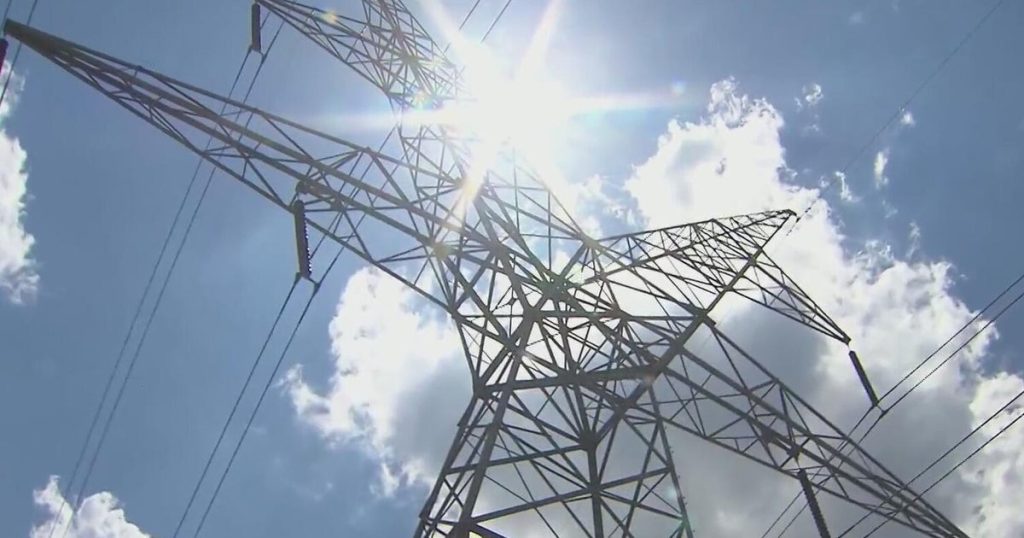A recent report from a global consulting firm highlights significant challenges for the United States’ electricity infrastructure due to soaring demand and rising costs. Predictions suggest that electricity demand could increase by at least 25% within the next five years and reach up to 78% by 2050, posing a serious threat to both reliability and affordability. As temperatures rise and technology consumption expands, officials warn of a strained power grid, further complicating the energy landscape.
| Article Subheadings |
|---|
| 1) Projected Increase in Electricity Demand |
| 2) Factors Contributing to Increased Demand |
| 3) Challenges for the Electric Grid |
| 4) Economic Implications |
| 5) Future Outlook and Recommendations |
Projected Increase in Electricity Demand
The recent report by ICF provides alarming projections for the United States’ electricity demand. It indicates that in the next five years, there could be a minimum 25% increase in demand, and predicting a staggering growth of up to 78% by 2050. Such figures far exceed historical trends observed over the previous two decades. As the underlying infrastructure struggles to cope with this unprecedented demand surge, the implications for both consumers and providers could be profound, particularly concerning affordability and reliability.
Factors Contributing to Increased Demand
Several factors are driving this steep rise in electricity demand. One major contributor is climate change, with rising temperatures causing greater reliance on air conditioning and cooling systems. Furthermore, emerging technologies such as electric vehicles and large-scale data centers, including cryptocurrency mining operations, are creating additional load on the grid. In Texas, it is estimated that nearly one-third of the expected increase will be due to these large load sources; while on a broader scale, markets in 13 mid-Atlantic and Midwest states, as well as Washington, D.C., are projected to experience a significant surge in energy consumption as sectors become increasingly electrified.
Challenges for the Electric Grid
Electric grid operators have cited increasing challenges as they prepare for elevated summer temperatures, particularly following a year marked by record-breaking heat. In a recent warning from PJM, one of the largest electric grid operators, authorities cautioned that they anticipate peak demand this summer to reach unprecedented levels. The operational capacity is under scrutiny, and officials such as Aftab Khan, PJM’s executive vice president of Operations, raised concerns about maintaining grid reliability under such stress. These developments raise questions about how well the existing grid can adapt to the rapidly evolving energy landscape.
Economic Implications
The rising demand for electricity is closely linked to economic pressures affecting consumers. Retail electricity prices are anticipated to outpace general inflation, with predictions suggesting an average household could face costs as high as $784 over the summer months in 2025 – marking a 12-year record. The National Energy Assistance Directors Association has also indicated that households will likely consume more electricity this season due to increased cooling requirements. Economic experts, including NEADA Executive Director Mark Wolfe, note that once electricity prices rise, they tend to remain elevated, putting substantial financial pressure on households across the nation.
Future Outlook and Recommendations
Looking ahead, the report suggests a need for a rethink in energy policy and infrastructure investment. The significant expected growth in demand necessitates strategic planning to enhance grid reliability and affordability. Recommendations include investing in renewable sources, enhancing efficiency measures, and promoting energy conservation to alleviate the pressures on the grid. With record heat already leading to increased energy consumption, immediate actions are required to avoid crises during peak demand periods in upcoming summers.
| No. | Key Points |
|---|---|
| 1 | Electricity demand expected to increase by 25% in the next five years. |
| 2 | Emerging technologies and climate change are significant factors for increased demand. |
| 3 | Grid operators are warning about maintaining reliability amid rising temperatures. |
| 4 | Electricity prices are rising faster than inflation, escalating pressures on consumers. |
| 5 | Strategic planning and investment in infrastructure needed to ensure future energy supply. |
Summary
The findings in the ICF report present a critical view of the U.S. electricity landscape, highlighting the urgent need for responsive action to meet soaring demand and escalating costs. With climate alterations and burgeoning technology use further stressing an already overloaded grid, officials and consumers alike face unprecedented challenges. Moving forward, a strategic and multifaceted approach will be essential in addressing these challenges to ensure the reliability and affordability of energy across the United States.
Frequently Asked Questions
Question: What are the projected trends for electricity demand in the U.S.?
Electricity demand in the U.S. is projected to increase by at least 25% over the next five years and could rise by as much as 78% by 2050.
Question: What factors are driving the increased electricity consumption?
Key factors include rising temperatures, the growing use of electric vehicles, and high energy-consuming operations such as cryptocurrency mining and data centers.
Question: How will rising energy demand affect consumers?
Consumers can expect to face higher electricity costs, projected to increase above the inflation rate, alongside a rise in the overall consumption of electricity for cooling purposes during hotter months.
